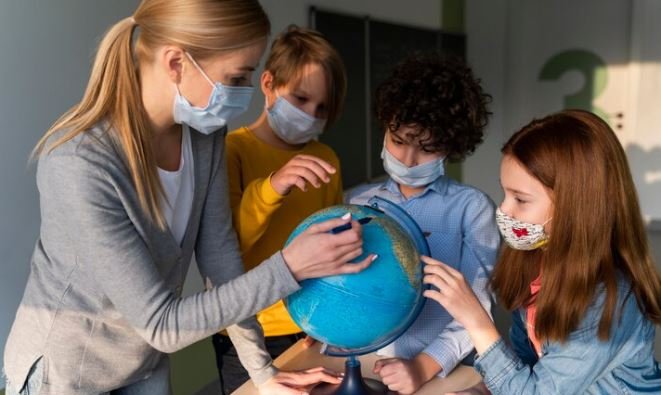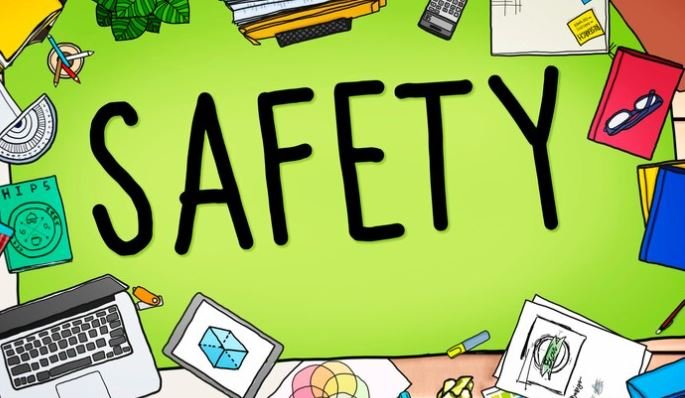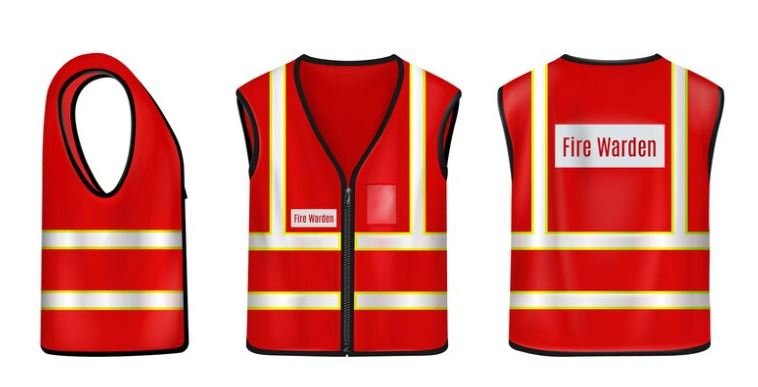Keeping our communities safe is a priority above all else, and legislation such as the Community Safety Education Act works to ensure that everyone in New Jersey understands how to communicate appropriately during situations with law enforcement by not only providing standards of behavior one should expect but positively defines what a respectful interaction looks like.
Understanding with what purpose was the Act of Community Safety Education created will help us take a look at how important it is for both drivers and police to communicate themselves clearly and respectfully.
Its goal; is to instruct students, drivers, and law enforcement officers on the most efficient ways they should conduct themselves during traffic stops (and other related experiences) so as not to incite a riot-type result by getting everyone home safely. We will discover what this act is, why it was established, and how exactly it contributes to making our communities better.
What is the Community Safety Education Act?
The Community Safety Education Act is a law designed to teach folks how to stay safe/respectful/and communicate during traffic stops and encounters with police officers when called upon.
Traffic stops are a term for the time police officers pull drivers over to check on things such as speeding, broken lights, or other traffic issues. At times, these interactions can be overwhelming or frustrating (for both the driver and the officer) if one side does not know what to expect.
The Community Safety Education Act is designed to ensure everyone knows how they should behave in these circumstances. This means educating drivers on what to do when they are pulled over by the police, as well as teaching officers how to better communicate their instructions in a clear and non-aggressive manner. The act also seeks to ensure that students are learning about these critical interactions before they become drivers.
Why Was the Community Safety Education Act Created?
The Community Safety Education Act was drafted with the understanding that safety is paramount for everyone. Traffic stops can go wrong in so many ways, often due to misunderstandings. This was an act, to reduce some of those misunderstandings by educating drivers and police officers on what they can expect and how they should react.
This act was also established to create trust between the community and law enforcement. It is one of the ways that helps make these interactions less scary and more respectful; through teaching clear rules and expectations. The objective is that regardless if you are the driver or officer, we have to ensure everyone gets home safely.

How the Community Safety Education Act Helps Drivers
This can also help drivers, as it is one of the largest ways in which The Community Safety Education Act trains those to drive on what they should or shouldn’t be doing when stopped by police.
A little preparation goes a long way in reducing the anxiety of facing an interview while also making things run more smoothly. What this act teaches drivers:
Stay Calm and Pull Over Safely: The act instructs drivers on how to stay calm when being pulled over by police officers. So make sure you can pull over, off the road, or into a parking lot. If you can remember to stay calm, it will help everyone in the situation keep their wits about them.
Hands where they can see them: Drivers are taught to keep their hands up, such as on the steering wheel. It gives the officer a greater sense of safety and makes you seem more compliant. A way to say, “ You got it from here.
Obey Instructions Fully: Following what the officer instructs is very crucial. If the officer is asked to give your driver’s license or car registration, you need to do so in his instructions peacefully. By following instructions, the interaction happens smoothly and quickly.
And, once the strap was fully latched down and locked in place. Be Polite: Say “yes sir” or No ma’am”, Politeness goes a long way. This sort of communication builds a positive relationship and lets them know that you understand the rules.
Question First: In case you are not able to comprehend what the police officer is saying, go ahead with questioning them respectively. This act allows drivers to communicate a bit more clearly with one another, aiding in keeping everyone on the same page.
How the Community Safety Education Act Helps Police Officers
The Community Safety Education Act is helpful for drivers but also helps police officers with a respectful and directed approach to the public. The best practices for conversation between Officers and Non-Drivers come during traffic stops, to keep everyone safe. Here is how the act benefits police officers:
Clear Communication Teaching: The act promotes clear communication. They know how to articulate a reason for pulling over the driver and what they want from that person. This can reduce confusion and make things less stressful.
Appreciation for Drivers’ Standpoint: Police officers are instructed how drivers may be jittery or apprehensive about a traffic stop. Being able to identify these emotions allows officers to show a greater degree of patience and empathy which makes the experience less unpleasant for all involved.
Calm/Respectful language: The Act Card tells officers to talk about the words (language) that they use while interacting with drivers. When officers respect the community, it means that they are there to help, and not just scare people.
Safety First — The ultimate goal of any traffic stop is safety. Police are trained to follow procedures ensuring their safety as well as that of occupants in the vehicle. If an officer follows the criteria outlined in this Act, they can perform a stop so that everyone is safe.
The Impact of the Community Safety Education Act on Students
The Community Safety Education Act also trains on what to talk about with students if they get in a car before they even are old enough to drive. Those who are educated about the aforementioned interactions tend to feel more at ease and less nervous as new drivers. I mean, in a nutshell — this is what the act does to be useful for students :
Starting Safety at a Young Age Students discuss proper traffic stop procedures for their lesson. This helps them grasp how it will be and benefits by letting them know ways they can keep their composure in the future as a driver.
Fostering Respect for Police: Understanding the kind of work that police officers do encourages students to see them as community helpers. This creates mutual respect and understanding between young people and law enforcement and strengthens safety.
Communication Skills: Students learn how to listen, be respectful when speaking, and ask questions if they do not understand. Not only are these useful for traffic stops, but possibly even more important in day-to-day life.
Creating Educated Citizens: With laws such as the Community Safety Education Act, students can learn their rights and responsibilities. This awareness allows them to develop into rational bottom-up safety thinkers and respectful citizens.

Why Respect and Safety Matter During Traffic Stops
The Community Safety Education Act is about respect and safety. This is why these values are there during traffic stops:
Decreased Tension and Fear: Respectful communication reduces tension and fear during stops. The driver feels more at ease because they know what to look forward and even the officer does too.
When people feel respected and understood, they are more likely to trust the police. When the act is implemented, drivers and officers work together to build a better healthier relationship by following it.
Provides Safety For Everyone: Ensures the safety of all during inspections. If both drivers and officers should react in certain situations the possibilities of confusion are reduced which will then indirectly help everyone to remain safe.
Promotes Positive Interactions: When the community and law enforcement have good interactions then it creates a better environment in general It demonstrates that police will have the backs of others and not just come in to enforce laws.
What People Who Are Driving Should Do During a Traffic Stop
Knowing what to do in a traffic stop can make it feel less stressful and intimidating. However, to keep in tone of the Community Safety Education Act here are a few tips:
Take a deep breath: Be cool first as brewing up can cause nothing but harm in this type of case. Take Deep Breaths — Reducing stress and gaining a clear mind.
Authorizations: DO NOT have to reach into your glove, pocket, or center console searching for your driver’s license and registration. This speeds up the stop.
Obey the Instructions of an Officer: Paying attention to what a police officer tells you is crucial for positive encounters. If you do not understand something, then it is better to ask respectably.
Have Courtesy: Be polite and use respectful language throughout the stop. Saying please and thank you… yes sir, no ma’am all that is good manners.
Yield in Your Car Unless Directed: Being positioned at the back or front of a police van is helpful. It helps keep the situation under control and safe.
Turn on Interior Lights At Night: If it is nighttime when you are pulled over, turning your car’s inside lights on will help the officer see along with making them feel safer. It is a small gesture to demonstrate you are compliant.
Tips for Drivers During Traffic Stops
However, there are times when misunderstandings can make traffic stops more taxing than they have to be. The Community Safety Education Act helps to dispel some of the most common misunderstandings about being in public while trans and/or gender nonconforming.
Getting shot is something new drivers fear when they’re pulled over, because ‘wouldn’t it make sense that the cops have heard about *you* by now?’ This is an act of teaching (not to instill fear but) safety during traffic stops.
Failure to be aware of action: most drivers do not know the procedure when pulled over causing an alert The legislation is crystal clear in laying out what drivers need to do.
Perfect Example of Worst-Case Scenario Thinking: Behind the wheel, some people expect cops to simply be out there angry. This has the side benefit of educating drivers on what is expected, as well as instructing officers to communicate all actions clearly and concisely so that there be no misunderstandings or [frankly] any chance for confrontation.
Fear of Speaking: Some people are afraid to ask questions quietly. The act gets the room asking questions politely to clarify what is going on and encourages everyone that it will all come together in a moment.
Understanding the Purpose of the Community Safety Education Act
Understanding what the Community Safety Education Act is for helps us to see how making resolving driver and police officer conversations safe, respectful, and transparent is.
This law has shown us the importance of communication, patience, and courtesy in building trust that helps keep everyone safe during traffic stops.
Drivers, students, and officers can work together as a community to make our roads better by educating themselves on these guidelines. On the road or in a classroom, this act reminds us safety and abiding by peaceful rules come long before pointing fingers.


